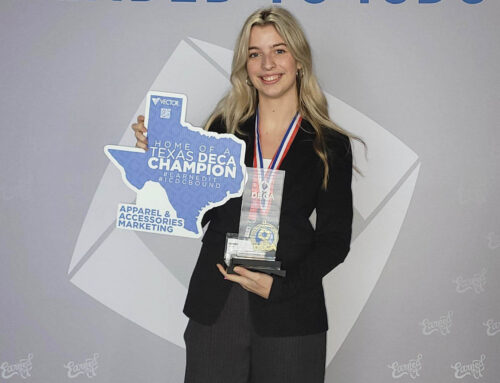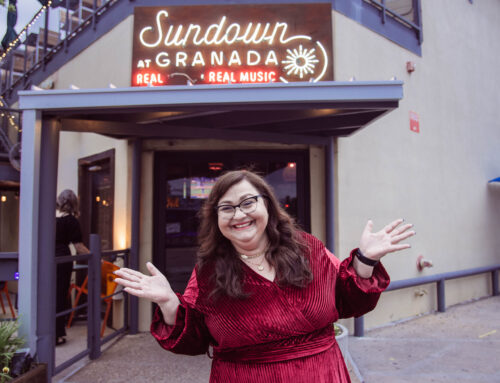Photography by Corrie Aune.
Always an artist, Taama Forasiepi grew up north of New Orleans where she worked multiple jobs as a teenager to afford art lessons.
“In my art class I was so far advanced, the teacher would send me down the hall to the closet to watch art lessons on VHS,” she says.
She graduated from Texas A&M with a degree in environmental design, and began a career as an architect. Since 2008, she has owned Blue Logic with business partner David Brehm. Blue Logic is a development studio that specializes in visualization animation and creating 3D models.
She also owns an art studio, Sans Soucie Studios, named after the 500-acre forest she grew up next to in New Orleans.
“It’s my hideaway where I can explore different mediums and have lots of fun with art,” she says.
In 2015, she decided to take on a new project and began writing children’s books, which she self-publishes through Sans Soucie Studio.
Her first release was The 12 Days of Christmas, a fully illustrated version of the classic carol. Each page has a colorful pencil-drawn illustration.
In 2016, Walter the Pumpkin was released, and thus began an educational theme present throughout the rest of Forasiepi’s books. This was her first book with her own original writing. Walter the Pumpkin is written in limerick and teaches children about how plants and kids grow. This book features watercolor illustrations.
Then, she created the character Jim Jack the Bunny and wrote a book of the same name.
“One of the things I try to do is teach children a little bit about the Earth and give a bit of a lesson,” she says. “In this particular book, the lesson was how seasons occur, and why.”
Her latest book is Jim Jack Learns to Track, which was released in January. In this one, we follow Jim Jack once again as he learns how to identify and follow animal tracks.
“Hopefully kids can learn a little bit about the tracks around their home,” she says. “I grew up in the woods back in Louisiana and that was what I did all the time, you know, learn to track.”
I’ve got a new series called Ladies in the Garden and they’re all about this “somebody.” It doesn’t really matter who she is, but she’s all in white — almost like a ghost in the garden — and this series was inspired by an artist called George Rodrigue. They’re just 5-by-7 panels of ladies relaxing in the garden.
Why did you decide to write children’s books?
I did a lot of painting and realized that every time I did one painting, all I got was one view, or one person to see it. And I thought, well, if I did books, I could have millions of people look at my artwork. I could distribute and teach a little bit about things I know about nature.
Do you start with the art or the story?
The latter. I like to come up with a concept that a child could learn and then build a story around it based off of these characters. Once I have the story established and pretty well outlined — of course it always morphs over time — then I start to develop the artwork.
What are your favorite children’s books?
You know I really love just the simple Mother Goose stories. And The Very Hungry Caterpillar, I love that one too. I love that one because it’s so different. When it first came out, it seemed like no one had done that type of artwork in children’s books. The way it was constructed was so refreshing, and the colors are amazing. It was very simple. Simplicity counts in children’s books, in my opinion.
And do you have a favorite art medium?
It depends on the day! Sometimes I’m in love with watercolor, other times pastels, sometimes it’s oils.
Your books feature a lot of Earth science. Why are you particularly drawn to that subject?
When I was in Louisiana as a kid, my mother was an amazing naturalist. She would teach us all about the plants to eat, the plants to avoid. I think a lot of city kids don’t get a lot of good experience with that — including my kids! But I hope that, you know, at least through these books they get a little bit of exposure to what a natural environment is.








